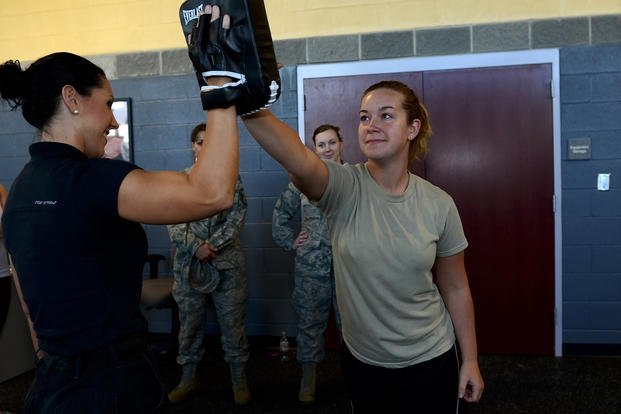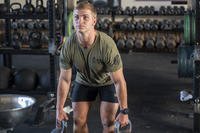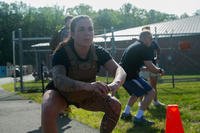This weekend, I was filming a new DVD on "How To Defeat Larger Attackers."
As I reached the film site, one of the guys assisting with the video was helping me get my training dummy out of my van.
Now Tyler is a personal trainer for a gym and about 6 feet, 6 inches tall so I was more than happy to let him give me a hand with the relatively heavy dummy.
As we were removing it out of the van and the base touched the ground, the dummy slipped out of my hands and snapped up quickly to strike Tyler right on the side of his face.
I didn't think it hit all that hard ... it only moved about 12 inches.
But Tyler was laid out flat on the pavement: a one-strike knockout ... with a 12-inch punch.
When Tyler regained his composure about 10 minutes later, I asked him to point the exact spot he got hit; I couldn't tell from the swelling.
As I suspected, he was hit right in the temporal lobe just about two inches from the corner of his eye.
Ironically, this was one of the strategies I already had planned on including in my DVD.
Because here's the lesson (that Tyler learned the hard way).
It's not how hard you hit; it's where you hit.
Particularly when you're facing an attacker who is much larger and stronger than you, just punching away at their chest, stomach or even their head is a losing scenario.
Wild punches, even when thrown with tons of power, practically are guaranteed to do very little harm.
But a single, well-placed blow, even with as little as 25% of the power you normally can muster, will take down a giant in one second.
I've seen it happen dozens of times.
So when you train to fight, it's great to blast away at a training dummy or heavy bag like a boxer.
But most people don't spend as much time focusing on targeting with your training ... and that's a mistake.
If you have a realistic training dummy (like Century's "BOB" dummy), then this is a great target training tool for self-defense.
If not, I've even seen people make a fake head out of newspaper and duct tape, then tape it to a heavy bag or support beam with great success.
Either way, try to get your targeting down as much as possible to the eyes, nose, ears, throat, and -- as Tyler would attest -- the temples.
Even though your targeting will be diminished in the adrenaline-charged fury of a real fight, you'll find that you're much more able to focus your mind on striking targets because of the familiarization you received in training this way.
More from Jeff at:
- www.AdvancedMassBuilding.com
- www.OptimumAnabolics.com
- www.CombatTheFat.com
Jeff Anderson is a 10-year veteran of the U.S. Army, a master instructor of close quarters combat self-defense and president of the International Society of Close Quarter Combatants. A full-time, self-defense author and instructor, Jeff has trained military, law enforcement and civilians in advanced close-quarter combat tactics for "real-life" self-defense.
Want to Learn More About Military Life?
Whether you're thinking of joining the military, looking for fitness and basic training tips, or keeping up with military life and benefits, Military.com has you covered. Subscribe to Military.com to have military news, updates and resources delivered directly to your inbox.

















